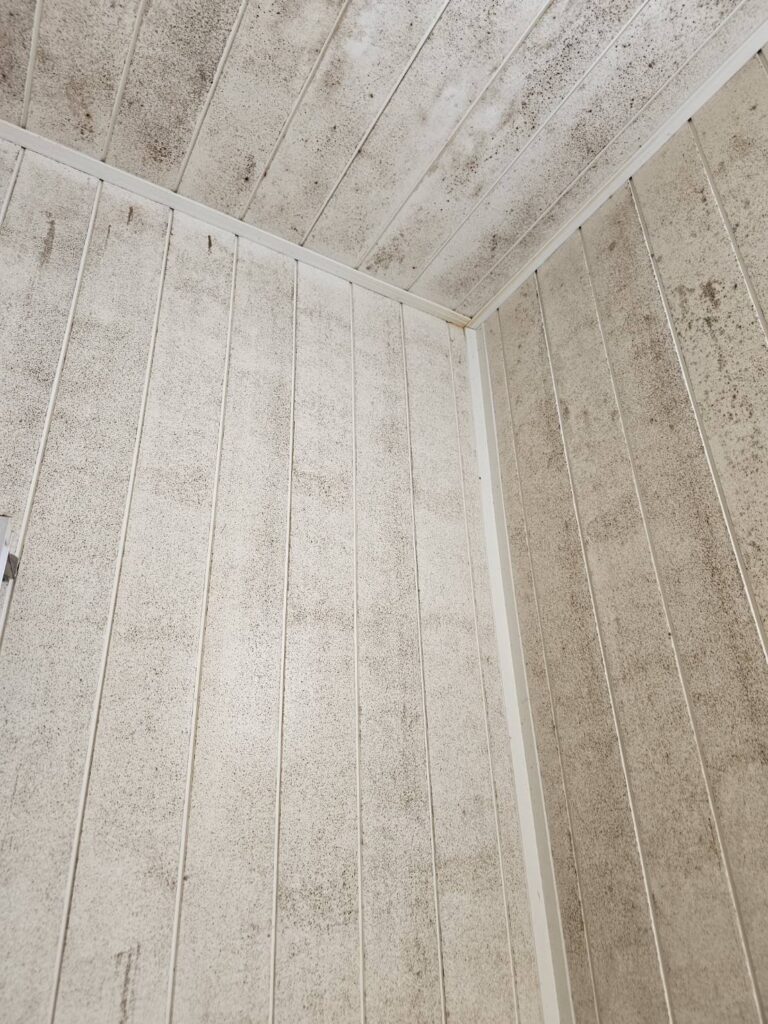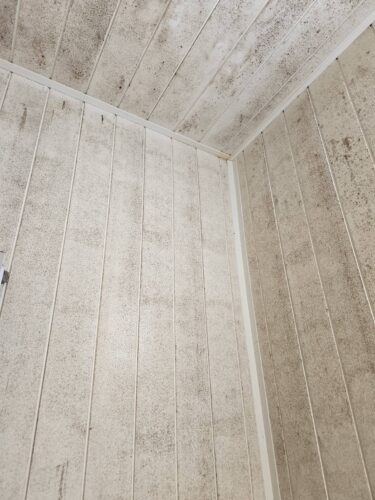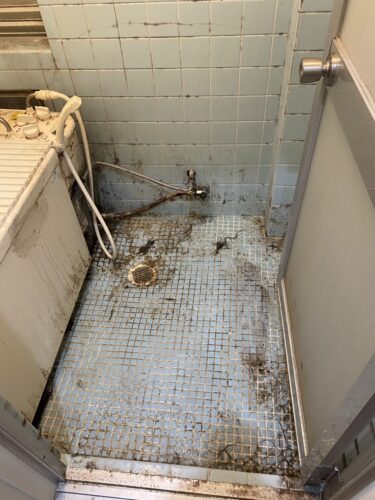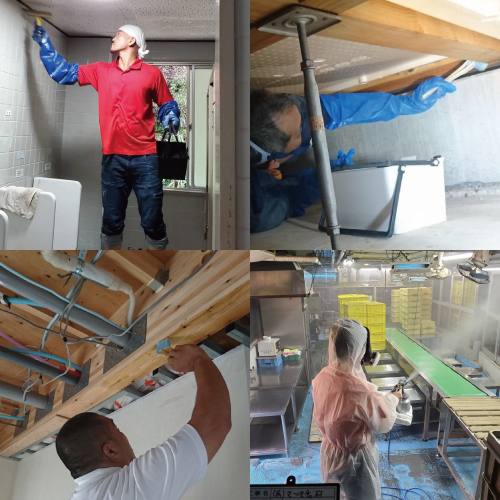1. basic risks and causes of mold in homes and vacation homes
Mold is the silent enemy of buildings such as homes and vacation homes. By the time it is visible, it has already taken root over a large area and may be infiltrating the interior of walls and behind furniture. If left unchecked, it can seriously affect the health of the occupants as well as damage building materials and household goods, especially in Japan’s humid climate. Here, we will explain in detail why mold tends to occur in houses and vacation homes, as well as the basic risk factors and mechanisms of its occurrence.
1-1. Hot and Humid Climate and Living Environment
Japan is a humid country by global standards, especially during the rainy season and summer, when humidity often exceeds 80%. This high humidity environment is ideal for mold growth. It is said that mold grows particularly actively in environments with humidity of 60% or more and temperatures of 20 to 30 degrees Celsius, and it is not uncommon for these conditions to be met in daily life.
In addition, the high airtightness and thermal insulation of modern housing makes it easy for indoor air to become stagnant. This results in “condensation,” which causes moisture to accumulate in hard-to-see places such as inside walls, under floors, and behind furniture, leading to the formation of mold. In particular, water vapor from cooking and bathing, moisture from indoor drying, and other factors combined with inadequate ventilation can lead to rapid mold growth.
It is also important to note that vacation homes are used infrequently and remain closed, leaving no escape route for humidity and facilitating mold growth. Moisture accumulates in spaces where there is no air flow, and mold slowly progresses.
1-2. Dust and dirt as a source of nutrients
Mold needs a “source of nutrients” as well as moisture to grow. Dust, sebum, food scraps, and fibers from clothing that naturally accumulate in daily life become food for mold. In particular, places that are difficult to clean, such as the back of refrigerators, inside air conditioners, and the backs of closets, can become extremely comfortable environments for mold.
Natural materials such as wood and paper are also a source of nutrients for mold. Tatami mats, sliding doors, and shoji screens in Japanese-style rooms easily absorb moisture, and because they are made of natural materials, they can easily become a breeding ground for mold. In addition, freshly dried laundry and wet bath mats after use also require attention. If these are left for long periods of time, the humidity and nutrients will be combined and the mold will spread quickly.
In the case of vacation homes, there is no shortage of cases where a small amount of dust and moisture can develop into major mold damage in a matter of months due to long periods of absence with inadequate cleaning. Regardless of whether the building is new or not, the risk of mold varies greatly depending on the state of management of the living environment.
2. Mold Risk in Highly Airtight and Insulated Housing
Highly airtight and insulated housing is a modern home designed to be energy efficient and provide comfortable living space. However, there is an unexpected pitfall in this type of housing construction. These are “moisture retention” and “mold formation due to condensation. In exchange for energy savings, the restricted ventilation creates an environment that makes it difficult for moisture to escape.
2-1. Mechanisms of Condensation and Humidity Stagnation
In a highly insulated house, thick insulation is applied to walls, ceilings and floors to minimize the influence of outside air. At the same time, gaps between windows and doors are minimized to make the house airtight. At first glance, this may seem like ideal housing performance; however, this leaves no escape route for moisture generated inside, and when moisture in the air comes into contact with cold walls and window glass, condensation occurs.
Especially in winter, condensation frequently occurs due to the large temperature difference between inside and outside. If this condensation water is absorbed into the interior of the wall or into the insulation material, the moisture will slowly accumulate without drying out, creating an environment for mold growth. It is not uncommon for mold to quietly develop behind wallpaper or inside walls, even though it may not appear to be a problem.
In addition, even in the summer, air conditioning cools the indoor air, making it difficult for the humidity to drop. This creates an uneven distribution of humidity throughout the house, causing mold to grow especially in poorly ventilated storage areas, behind walls, and under floors.
2-2. Correct installation of airtight sheets and insulation
The most important factor in preventing mold in a highly airtight and insulated house is the quality of the installation. No matter how good the insulation and airtight sheets are, if they are poorly installed, moisture will penetrate through the gaps and condensation will form inside the insulation. When insulation gets wet, its thermal insulation performance is significantly reduced, resulting in a vicious cycle of increased temperature differences between the inside and outside, which further increases the susceptibility to condensation.
Particular attention should be paid to the treatment around insulation joints and piping. Even the smallest gap here allows moisture to enter easily. Installing airtight sheets requires specialized knowledge and skills. The joints of the sheets must be taped tightly, and the airtightness performance must be measured (airtightness test).
In addition, the selection of insulation material is also important. If a heat-absorbing insulation material is used, it is essential to install a moisture-proof sheet. Conversely, if insulation with low moisture absorption properties is used, it is necessary to create a structure that does not trap moisture by providing an appropriate ventilation layer. These measures must be planned from the design stage, and detailed discussions with the building contractor are essential.
3. Class I Ventilation Systems and Mold Control
Modern high-performance homes are required to have 24-hour ventilation systems to maintain indoor air quality. Of these systems, Type I ventilation systems have attracted particular attention. This system, which mechanically controls both air supply and exhaust, is very effective in preventing “moisture stagnation,” the great enemy of mold, but it can also cause problems if not operated correctly.
3-1. Features and Advantages of Type 1 Ventilation
Type 1 ventilation is a system in which both intake of outside air (air supply) and exhaust of indoor air (exhaust) are performed by a machine. In particular, the type with a heat exchange function uses the temperature difference between the outside air and exhaust air to bring in fresh air while maintaining the room temperature. This creates an ideal living environment where air is constantly circulated 24 hours a day without reducing heating and cooling efficiency.
The greatest advantage of Type 1 ventilation is that it can supply air while adjusting the humidity and temperature of the outside air to some extent. Filters can also remove pollen, PM2.5, and other particulate matter, making it safe for allergy sufferers. Furthermore, even in humid areas, a system with a humidity sensor can automatically increase ventilation, reducing the risk of mold.
3-2. Filter Management and Ventilation Design Points
Proper design and regular maintenance are essential for Class I ventilation to perform as it should. Particularly important is the cleaning and replacement of filters. If the filter becomes clogged, the air supply and exhaust air volumes will decrease and air circulation in the room will become stagnant. As a result, moisture cannot be discharged, creating an environment conducive to mold growth.
In addition, if air supply and exhaust vents are unbalanced or air flow is unevenly arranged at the design stage, there are cases where only certain rooms suffer from inadequate ventilation. Inadequate ventilation, especially in closed spaces such as storage rooms and closets, can easily become a breeding ground for mold.
In addition, consideration must be given to the location of outside air intake. For example, if the air intake is located near an outdoor unit of an air conditioner or along a road where exhaust gas tends to accumulate, air quality may be adversely affected. Checking these points in advance is the key to maintaining a comfortable and mold-free living environment. 4.
4. Condensation and Mold Problems in ZEH Housing
ZEH (Zero Energy House) is attracting attention as a housing that combines comfort and energy conservation. However, while ZEH homes boast high-performance insulation and airtightness, they are also prone to moisture buildup, which can increase the risk of mold if countermeasures are not taken. In particular, airtight structures are prone to condensation, which can spread inside walls and ceilings, creating a breeding ground for mold that cannot be seen.
4-1. Causes of Condensation Even in ZEH
ZEH homes are designed to minimize the effects of outside air through the use of insulation and high-performance sashes. At the same time, however, it is also difficult for indoor air to escape. As a result, water vapor generated by cooking, bathing, washing clothes, etc. stays inside the room, and without sufficient ventilation, condensation will form on the inside of the windows and walls.
ZEH homes are often designed with small window areas to maintain energy efficiency, and large-opening windows are concentrated on the south side of the house to obtain solar radiation. In this structure, condensation tends to occur around windows and on the north wall in winter when the difference between the outside and inside temperatures is large. In addition, condensation can wet the insulation used in the walls, causing mold to form within the walls.
In addition, the balance of insulation, airtightness, and ventilation is extremely important in a ZEH house, along with on-site power generation using renewable energy, but if there is a discrepancy between design and operation, the high performance may have the opposite effect.
4-2. Tips on humidity control and ventilation operation
The key to mold prevention in ZEH housing lies in humidity control and ventilation operation. In particular, it is desirable to keep indoor humidity around 50% because mold is activated when humidity remains above 60% for a long period of time.
To achieve this, a thermo-hygrometer should be installed and checked frequently, and a dehumidifier or ventilation system should be utilized depending on the situation. In particular, if ventilation is neglected when drying laundry indoors or cooking, humidity can spike in a short period of time and mold can spread to the ceiling and corners of walls.
It is also very important to operate a 24-hour ventilation system. Some people turn off the ventilation system out of concern for electricity costs, but this is counterproductive in a ZEH house. Constant ventilation allows air to circulate and reduces the risk of mold by expelling indoor humidity to the outside.
In addition, using air conditioning or floor heating to maintain a constant indoor temperature is another way to prevent condensation. Especially in winter, when temperature differences are large, such as in the morning and evening, it is necessary to use humidifiers sparingly and take measures to reduce the temperature difference from the outside air.
5. Mold Prevention in Villas and Second Houses
While villas and second houses are useful as extraordinary healing spaces, they are also vulnerable to mold growth because they are away from home for long periods of time, making them prone to moisture buildup. It is not unusual for mold to spread throughout the house after several months of neglect due to inadequate ventilation and humidity control. This section details the specific mold risks and countermeasures for vacation homes and second homes.
5-1. Causes of humidity buildup due to long-term absence
Villa and second homes are often built in areas of rich nature away from urban areas, where the climate conditions are also prone to high humidity. Especially along the sea coast and in mountainous areas, the temperature difference between morning and evening is extreme, and condensation is likely to occur. In addition, the absence of residents means that there is no air flow, making it easier for moisture to become trapped indoors.
Villa buildings with many natural materials such as furniture, tatami mats, and wooden fixtures and fittings are highly hygroscopic, meaning that once moisture is trapped inside, it is difficult to dry out. In addition, closed spaces are not ventilated, making them susceptible to mold growth. In particular, closets, closets, and bathroom areas can become damp without ventilation, and black mold can become visible within a few weeks.
In addition, in many cases, electricity and water are shut off and dehumidifiers and exhaust fans are not in operation, making moisture management more difficult than in a normal house.
5-2. Use of remotely controllable dehumidification and ventilation systems
The use of IoT appliances, which have been attracting attention recently, is very effective for moisture control in vacation homes and second homes. By installing a dehumidifier or ventilation system that can be remotely controlled in conjunction with a smartphone, it is possible to control the indoor air environment without having to visit the site.
For example, a high-performance dehumidifier that automatically starts dehumidification operation when indoor humidity exceeds a set value or a whole-house ventilation system that automatically ventilates in conjunction with outside air can help maintain a good indoor environment even during extended absences.
In addition, installing a system that can remotely operate air conditioners and circulators can prevent moisture retention and maintain air flow. In addition, humidity sensors can be installed and the data checked regularly so that countermeasures can be taken when necessary.
In addition to this, by running the dehumidifier before returning home, you will be able to spend more time in a comfortable space, thus achieving both convenience and mold control.
6. Mold Prevention for Vacant Homes
Vacant houses often lack regular maintenance, making them ideal environments for mold growth. Japan’s humid climate further increases the risk, with mold appearing within weeks if the space is left unmanaged. Here we explore the common problems of vacant homes and effective mold prevention strategies.
6-1. Importance of Air Circulation and Humidity Sensors
In unoccupied homes, stagnant air allows humidity to build up. Areas with poor airflow, such as behind furniture, closets, or attics, can exceed 70% humidity, encouraging mold in a matter of days.
Basic measures like periodically opening windows and ensuring vent openings are unobstructed help. Installing auto-ventilation systems with humidity sensors enables remote control and automated moisture management.
Additionally, placing digital thermo-hygrometers throughout the home and using IoT devices to collect and monitor data allows homeowners to take timely preventive actions from a distance.
6-2. Recommended Routine Inspections and Cleaning
To keep a vacant home in good condition, regular inspections and cleaning are crucial. Monthly checks are ideal and should cover roofing, gutters, drainage, and indoor odor detection.
Seldom-used areas like bathrooms or kitchens require water flow at least every 1–2 months to prevent drying of drainage traps, which can cause foul odors and mold.
Simple wiping to remove dust helps eliminate mold nutrients. AC filters should also be cleaned periodically, and anti-mold sprays can provide extra protection.
7. Mold Control in Coastal and Mountain Homes
Vacation homes are often located in high-humidity regions like coastal or mountainous areas. These environments have extreme temperature fluctuations and salty air, posing unique mold challenges. Here’s how to address mold in such conditions.
7-1. Mold Risks from Natural Environments
Mountain homes often suffer from condensation due to temperature differences between day and night. The resulting moisture can penetrate wooden structures, leading to internal mold.
In coastal areas, salty sea air clings to building surfaces, attracting moisture and promoting mold. Salt also corrodes metal parts of HVAC units, reducing their ventilation efficiency and accelerating mold growth.
These natural factors demand customized mold prevention approaches beyond standard methods.
7-2. The Effectiveness of MIST Technology
In extreme environments, professional solutions like MIST technology are highly effective. MIST uses a fine mist of proprietary agents that penetrate deeply into surfaces without causing damage, even on delicate materials like wood or paper.
MIST also includes long-lasting anti-mold treatment, neutralizing airborne spores and protecting the entire space from regrowth. It’s ideal for vacation homes where visits are infrequent but preservation is essential.
8. DIY Mold Removal and Precautions
For small mold outbreaks, DIY removal is a viable option. However, using the wrong methods can worsen the situation or damage materials. Below are safe and effective tips for home mold removal.
8-1. Using Ethanol and Household Products
Spraying undiluted ethanol on mold spots and wiping after a short wait can kill mold spores effectively. Baking soda or citric acid are also good options, especially for kitchens or bathrooms, due to their eco-friendliness.
However, if mold has penetrated deep into a surface, surface cleaning alone won’t suffice, and regrowth is likely.
8-2. Gentle Methods for Sensitive Materials
Delicate materials like wood or paper should not be treated with strong chemicals. Instead, use ethanol-soaked cloths gently on wood, and dry brushing on paper to avoid damage.
Steam cleaners can be effective in cracks or flooring joints, but should be used carefully to avoid warping. If DIY methods fail or risk material damage, it’s best to contact professionals early.
9. Professional Mold Removal (MIST Method)
When mold spreads extensively or penetrates deep into building materials, professional removal is the safest option. The MIST method offers a modern solution with proven effectiveness and safety.
9-1. How MIST Works and Its Safety Benefits
MIST sprays a mist of specialized solution that breaks down mold spores without scrubbing or sanding. This makes it safe for fragile surfaces like plaster or antique wood.
The solution is non-toxic and safe for homes with children or the elderly, and leaves no harmful residue. It’s used in hospitals and historic sites where preservation is critical.
9-2. Advantages Over Traditional Methods
MIST offers faster processing and lower recurrence rates compared to chlorine-based treatments. It includes follow-up anti-mold protection that prevents airborne spores from resettling.
While costs vary, the long-term savings from reduced damage and lower maintenance needs make MIST a highly cost-effective option.
10. Comprehensive Mold and Humidity Prevention Plan
Mold prevention requires a tailored, multi-pronged approach depending on the house type, location, and usage. Here’s a universal strategy for any household.
10-1. Balancing Humidity, Temperature, and Ventilation
Keep humidity below 60%, room temperatures between 20–25°C, and ensure 24/7 ventilation. Use circulators to prevent moisture build-up in corners.
Avoid habits like poor post-cooking ventilation, closing bathroom doors, or excessive indoor drying. These practices increase humidity and mold risk.
10-2. Choosing and Maintaining the Right Equipment
Select dehumidifiers, ventilation fans, and air purifiers based on room type and size. Use remote-controlled IoT devices for vacation homes or empty houses.
Regularly clean filters and calibrate sensors to maintain equipment performance. A coordinated plan covering equipment, lifestyle, and maintenance is the key to a mold-free home.





